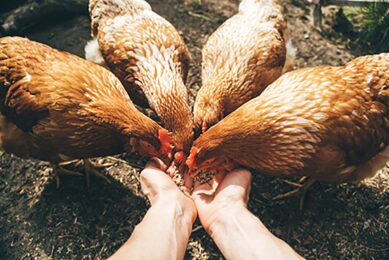Chicken genome used to develop new poultry vaccine
US researchers are now making use of a chicken genome sequence to develop vaccines to fight Marek’s disease, which costs the poultry industry US$1 bln a year worldwide.
AG Professional reports that researchers in Michigan, Delaware and Texas will be involved in this development project, which is being funded by USDA’s Cooperative State Research, Education, and Extension Service.
The research
Jerry Dodgson and colleagues at Michigan State University, the USDA-Agricultural Research Service Avian Disease and Oncology Lab, the University of Delaware and Texas A&M University began by assembling the physical map of the chicken genome using DNA clones that describe all or nearly all of the genes in the chicken.
The researchers then began to identify individual genes whose levels went up or down after infection by Marek’s disease virus (MDV). To do so, they used a ‘gene chip’ with approx. 13,000 gene sequences (about half the chicken genes) to assay levels of gene products before and after MDV infection, and in chicken lines that were highly susceptible versus lines that were more resistant.
Distinguish infected and uninfected cells
MDV spreads via inhaled feather dander. So, infected tissue is a mixture of uninfected and infected cells, making it difficult to distinguish differences between them. Using a laser to micro-dissect a clump of infected cells from uninfected ones, the group discovered a suite of genes in the chicken genome that influence the course of viral infection. This new understanding of the interaction between the virus and the genes was used to develop new ways to identify genes in the chicken that are turned on or modified by MDV infection.
The vaccine
Through this research, a new recombinant vaccine was developed by cloning one of the identified genes, called chicken MIP-1, into the vaccine strain of the virus. The protection this vaccine provides is comparable to that afforded by the best commercially available vaccines.
The chicken genome sequence developed during this project is now available to scientists working on MDV worldwide.
Related links:













